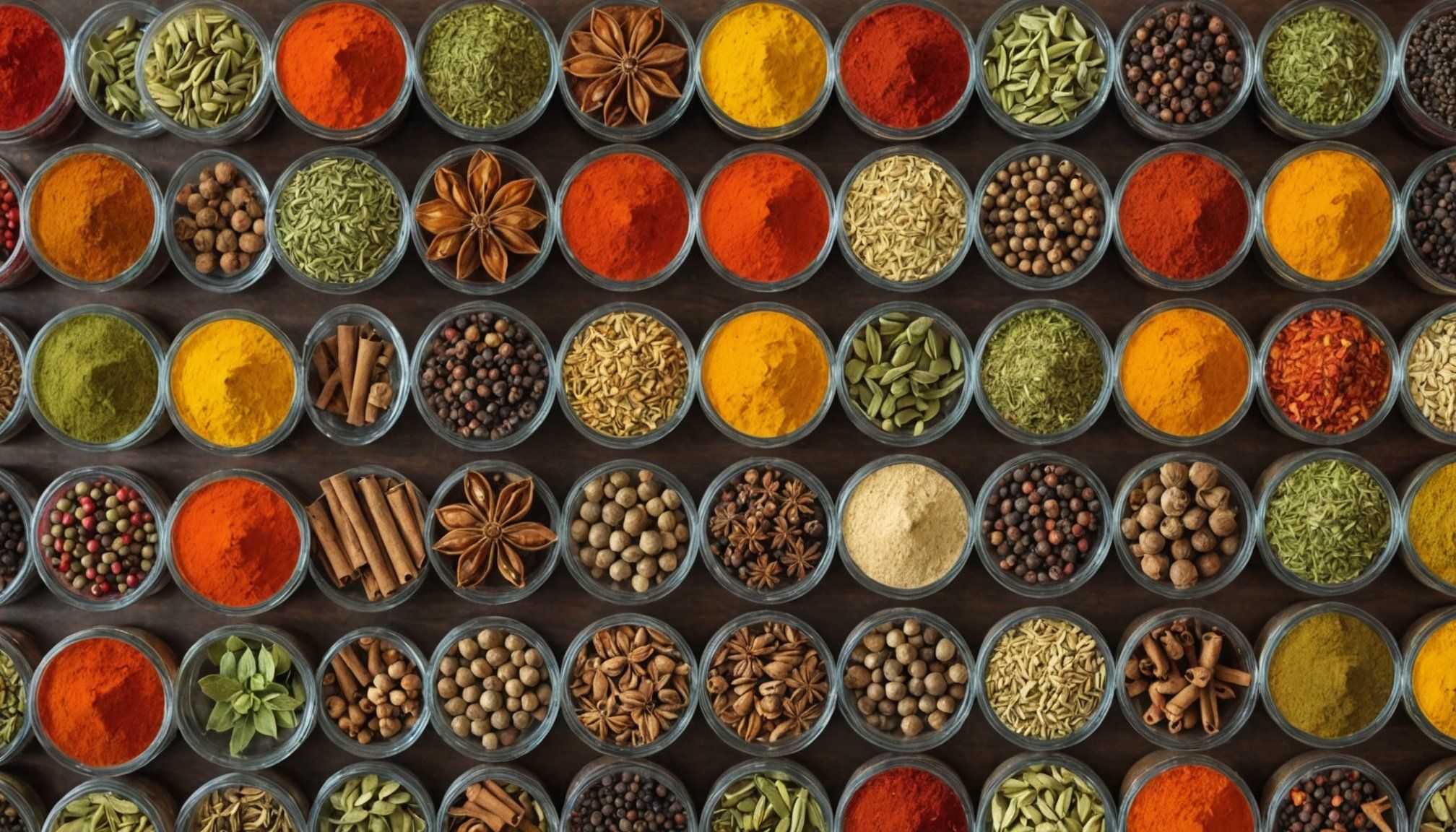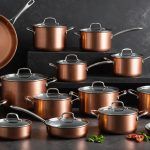Categorizing Your Spices: Best Practices
Understanding the spice categorization process enhances both cooking efficiency and the aesthetic appeal of your kitchen. The first step is identifying common categories for your spices. Grouping them as herbs, spices, and seasoning blends streamlines your cooking process, allowing you to grab what you need quickly. This method fosters efficiency as you won’t waste time hunting for that elusive bottle of oregano.
Another method involves regional and global spice groupings. By storing spices together based on their use in specific cuisines, like Indian or Italian, you can conveniently create authentic dishes. For those who love exploring diverse recipes, this approach is particularly beneficial.
Also read : Choosing the Perfect Stable Cake Stand for Your Multi-Tiered Masterpieces
Moreover, tailoring categories to your personal cooking style is key. If you frequently prepare Mexican cuisine, dedicate a space specifically for cumin, chili powder, and coriander. This personal yet strategic spice organization ensures a seamless cooking experience.
Lastly, displaying your spices in an eye-catching way adds an element of style to your kitchen. Consider using clear, uniformly-shaped jars labeled correctly for visual appeal and quick access. A well-organized spice system not only enhances kitchen aesthetics but also invites culinary creativity.
Additional reading : Choosing the Ultimate Quick-Dry Fabric for Kitchen Towels: What You Need to Know
Understanding the Importance of Spice Organization
The importance of spice organization extends beyond aesthetics. When your spice drawer is neatly organized, it significantly boosts cooking efficiency. Imagine swiftly selecting the right seasoning without rummaging through a chaotic jumble. This not only saves time but enhances your culinary endeavors by ensuring that all ingredients are fresh and effective.
Organized spices lead to better flavor enhancement. With easy access, you’re more likely to use a variety of seasonings, experimenting with new recipes and enriching the overall taste profile of your dishes. Your kitchen becomes a playground for creativity where spontaneous culinary ideas can thrive.
Moreover, spice organization greatly impacts kitchen aesthetics and accessibility. A tidy spice drawer using clear jars or labelled containers adds an element of style to your space. This isn’t just about appearances—it’s about making your cooking environment more welcoming and inspiring.
Finally, organized spices help in maintaining freshness. Spices lose their potency over time, and a systematic approach helps you keep track of expiration dates. When your spice collection is in order, it becomes easier to discern what needs replenishing, ensuring that every dish is crafted with high-quality ingredients.
Step-by-Step Guide to Organizing Your Spice Drawer
Successfully organizing your spice drawer enhances both efficiency and enjoyment in your kitchen. Begin by assessing your current spice collection. Take stock of what you have, checking for duplicates and spices past their prime. Purging outdated and unused items creates space for a better setup and minimizes clutter.
Next, consider choosing the right storage solutions. Containers are key here. Opt for glass jars for premium spices to maintain freshness, while lightweight plastic or metal containers are great for bulkier collections. The storage choice impacts the ease with which you can access your spices while enhancing visibility with clear labels or see-through containers.
Now, move on to implementing a systematic categorization method. Group spices based on personal cooking styles or culinary preferences, as these categories reflect the most practical way to arrange them in your drawer. For example, arrange commonly used spices like salt and pepper in front or group together all baking-related spices for easy access when needed.
By following these organized steps, your spice drawer will not only become aesthetically pleasing but also transform into a functional part of your kitchen routine. Keep in mind that efficient organization paves the way for an enjoyable cooking experience.
Effective Storage Solutions for Spices
Selecting the right spice storage solutions is instrumental in maintaining both freshness and order. The choice of containers and jars plays a pivotal role. Glass, plastic, and metal containers each offer unique benefits: glass is ideal for preserving aromatic spices, plastic is light and easy to handle, and metal provides robust storage for less fragile spices. Clear labeling is essential for quick identification and minimizing cooking disruptions. For space-saving, options such as stackable or uniform-size jars maximize efficiency within limited space.
Containers and Jars
Opting for space-saving containers ensures seamless accessibility. Consider drawer inserts and racks. Inserts divide drawer space efficiently, allowing for categorized storage. Drawer integration extends beyond inserts; spice racks can transform cabinet doors into organized storage areas, perfect for those needing easy-to-reach spice solutions in cramped kitchens. Magnetic spice jars, attached to a fridge or a metal strip in your workspace, offer an innovative approach—ideal for small kitchens.
Visibility and Accessibility
Ensuring optimal visibility and accessibility is key. Tiered organizers allow you to see all your jars at once, preventing overlooked spices. Group spices by usage frequency; frequently used spices should be within easy reach, while less-used ones can be stored higher or further back.
Common Mistakes to Avoid in Spice Organization
Spice Organization Pitfalls can easily disrupt your culinary harmony if overlooked. A key mistake is overcrowding your spice drawer. When drawers are jam-packed, it becomes difficult to locate specific spices, slowing down your cooking process and leading to frustration. Maintain a practical inventory by routinely decluttering, ensuring every spice has space and remains visible.
Another common oversight is ignoring expiration dates and freshness. Spices lose potency over time, diminishing their flavour impact. Regularly assess and replace expired items to maintain the vividness in your dishes; this practice ensures each seasoning enhances your meal as intended. Freshness lies at the heart of impactful flavours, and a well-organized drawer facilitates easy monitoring.
Mislabeling or lack of labeling further complicates spice identification, leading to potential cooking mishaps. Utilize clear labels to ensure accuracy and efficiency. Properly labeled jars foster an intuitive cooking environment where spices are readily identified, leading to seamless culinary adventures.
Lastly, failing to uphold visibility can stall your culinary efforts. Utilize tiered organizers or racks to elevate spices visually which in turn maintains accessibility. Recognize and correct these pitfalls for a consistently elegant and efficient spice drawer.
Usage Tips and Easy Recipes for Common Spices
Understanding how to utilise spices effectively elevates both the flavour and nutritional value of your dishes. Everyday spices like cumin, basil, and paprika are versatile, adding depth when used in simple recipes. For instance, a sprinkle of paprika can enhance your roasted potatoes or scrambled eggs, while basil invigorates a classic tomato sauce. Mixing cumin with lime gives your grilled chicken a zesty kick.
Everyday Spices
To maximise flavour, consider combining spices. A harmonious blend of oregano, thyme, and rosemary can transform a basic roast into a culinary delight. Begin with small quantities to avoid overpowering your dish, and adjust based on personal taste.
Unique Spice Combos
Venturing into unique spice combos can tantalise your taste buds and introduce new textures to familiar meals. Try pairing the earthy warmth of turmeric with the sweetness of cinnamon for a delightful twist on rice dishes. Similarly, mixing cloves with star anise creates an aromatic base for stews and soups, reflecting influences from different cuisines.
Exploring spices not only diversifies your cooking repertoire but also offers numerous health benefits. Many spices are antioxidant-rich, aiding in digestion and boosting overall wellness. Embrace experimentation to unlock the full potential of your spice cabinet.
Maintaining Your Organized Spice Drawer
A well-organized spice drawer requires regular attention to maintain its efficiency and aesthetics. Routine checks are essential to ensure freshness and effective use. Regularly inspect spices for expiration dates, as old spices can lose their potency, affecting your dishes’ flavour. Keeping track of freshness helps keep your culinary creations vibrant.
Strategies to prevent clutter accumulation involve developing habits such as returning spices to their designated spots immediately after use. This practice maintains your organization scheme and prevents unnecessary buildup over time, ensuring your spice drawer remains visually appealing and functional.
Periodically re-evaluate your spice collection to align with changes in your cooking preferences or dietary needs. This reassessment allows for the removal of seldom-used or expired spices and makes room for new ones you wish to incorporate.
Regular Organization Practices
- Label Review: Ensure labels are clear and legible. Replace any faded or unclear labels to maintain quick identification.
- Inventory Updates: Replenish in-demand spices and experiment with introducing new flavors.
- Practical Accessibility: Group frequently used spices in prime spots for reachability.
By incorporating these routines into your kitchen habits, you can enjoy a consistently organized and efficient spice drawer that enhances your cooking experience.
Visuals and Diagrams for Clarity
Incorporating visuals and diagrams into your spice organization can transform understanding and execution. Visual aids are fundamental in conceptualizing effective layouts, reinforcing the importance of intuitive storage solutions.
Diagrams showcasing effective layouts allow for an easy grasp of optimal organization strategies. They depict how to implement drawer inserts or racks efficiently, maximizing accessibility while maintaining a neat appearance. Before-and-after examples particularly highlight the transformation of cluttered spice spaces into streamlined sections, emphasizing the potential of thoughtful spice drawer enhancements.
Before-and-after examples serve not just to inspire but to educate on the tangible benefits of structured organization. These comparisons vividly illustrate how strategic changes can facilitate better cooking efficiency and a more aesthetically pleasing kitchen environment. By viewing straightforward layouts, even complex spice groupings become accessible to anyone engaged in enhancing their cooking space.
Visual representation reduces the ambiguity of organizing techniques, making it more approachable for those unfamiliar with methodical organizing. Utilizing visuals ensures that each aspect of spice arrangement is transparent, engaging, and implementable, ultimately leading to a harmonious and functional culinary setup.











